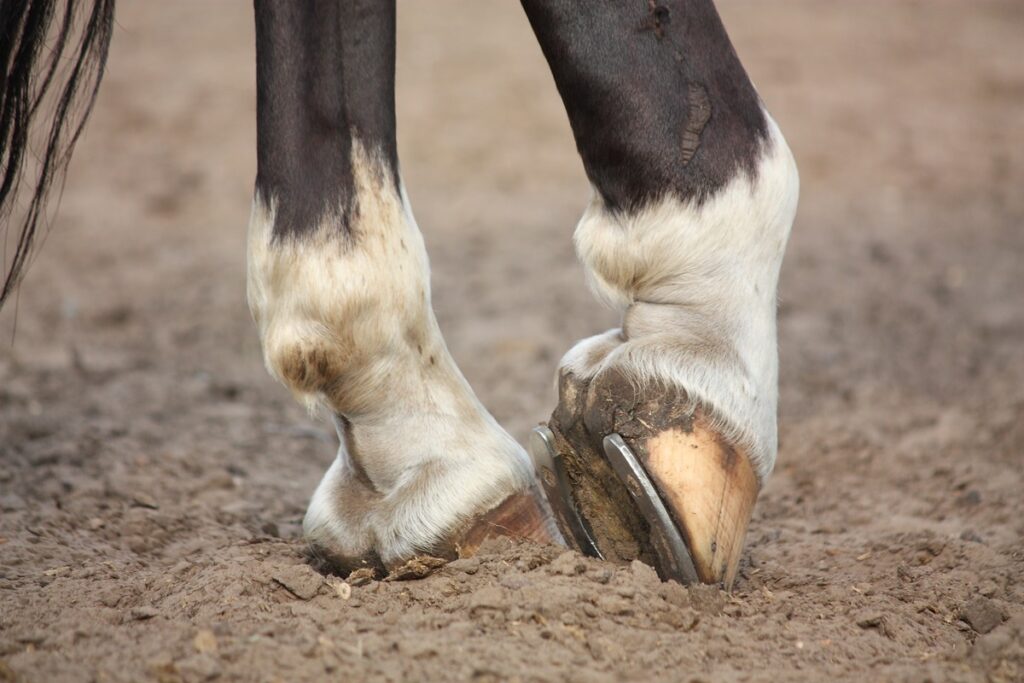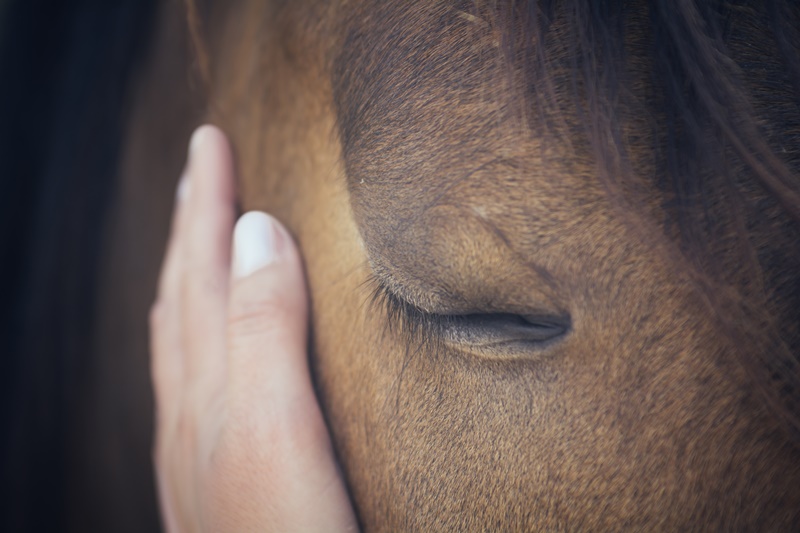Many animals sleep lying down, curled up in a safe place, so seeing a horse sleeping standing up often raises curiosity. Have you ever wondered why horses sleep standing up?
If you want to learn some interesting facts about the horse’s sleep, you’ve come to the right place!
How long does a horse sleep?
Horses only need about 2-5 hours of sleep a day and it is not continuous sleep, rather short naps throughout the day.
The horse’s sleep varies, due to the influence of different factors:
- Noise
If there is constant buzz in the stable area or around the pasture, horses will not feel comfortable enough to lie down to sleep. Rather, they will prefer to nap shallowly in a position that will ensure a quick getaway if there is any danger.
- Location
In large herds on vast pastures or ranches, where the area is quiet and the horses feel relaxed, there is the opportunity to spot horses sleeping on their sides. This is quite a disturbing sight, but it indicates the highest level of relaxation and a sense of security.
Horses will often not feel comfortable in their stalls when the hallway is in turmoil or it is feeding time. That is when you will mainly witness horses sleeping standing up.
- Presence of other animals
If your horse is staying in the barn with other animals, such as pigs or cows, it may not feel entirely comfortable and only gently nap in a standing position.
Horses are quite slow to stand up
If a horse decides to nap on the ground, it’s difficult for it to get back up due to its physique and weight. Even more so if the horse is older and ailing. Foals and young horses that feel relaxed in a given environment take naps lying down, but older individuals do not opt for this solution. The time wasted by slowly getting up would give a predator an advantage, which is dangerous for the whole herd.
Horses that live in stables, once they feel relaxed in their stall or around their herd, lay down to sleep. Often, after an intensive trip or training, we have the chance to see a mount peacefully napping in its stall or near its herd.
Horses are wild and fleeing animals by nature
Wild horses are on constant alert for escape. During the night, when they are most vulnerable to attack, they stand to be able to react quickly and flee. This defines in them their survival instinct.
Horses are prey for wolves, mountain lions, coyotes and even bears. Nature has developed in them survival reflexes – closely monitoring their surroundings, listening and, if necessary, breaking off to flee within moments. Moreover, they have developed the ability to sleep standing up, so they are able to quickly get ready to run and escape.
Horses take turns sleeping
In the wild, horses take turns sleeping. This is due to the need for constant vigilance, so one group of horses naps, while the other part keeps an eye on the surroundings. What’s more, by having part of the group sleeping standing up and the other part staying alert, they effectively mislead any predators who may want to attack them.

How does a horse sleep standing up?
Horses can sleep (and rest at the same time) standing up. They have a developed locking system for the front legs, which allows them to remain in position and to rest their tendons and muscles with no fear of falling.
Can a horse sleep lying down?
If the horse feels safe, it may lie down on the ground to take a short nap. Depending on where it is (e.g., the animal will certainly feel more comfortable in its stall than at a competition), it will fall into a light sleep or a deep sleep – the REM phase.
What’s more, a horse can get a good rest standing up as well as lying down, so the sleeping position doesn’t really matter, more the environment and feeling of safety.
Sum-up
A fully lying down position indicates that the animal is relaxed and comfortable at its greatest. If your horse is already familiar with the stable it is staying in, yet continues to sleep in a standing position, it probably doesn’t feel safe enough or simply doesn’t like lying down.

